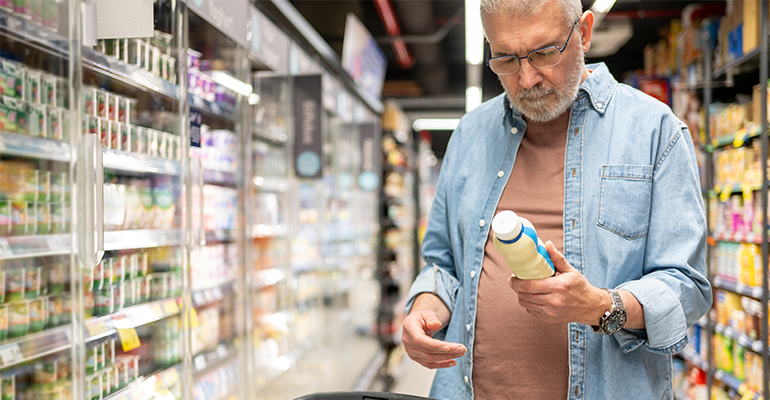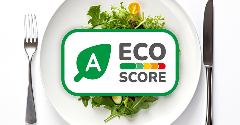News
‘Health’ labels on products reduce consumers’ willingness to pay
10 Mar 2025A study into front-of-packaging “health” labelling finds that these labels alone can lower US consumers’ willingness to pay.
However, the negative impact on willingness to pay is reduced when supported by credible information, for example, when the product meets Food and Drug Administration (FDA) standards for low added sugar, sodium, and saturated fat.

This way a key finding made by researchers from the University of Florida, Texas A&M University, and Korea University who explored the value consumers put on front-of-pack (FOP) “health” labelling.
The team, who published their findings in the Food Policy journal, assessed the labelling in relation to FDA guidelines. They sought to provide critical insights into how US consumers respond to the FDA-endorsed “healthy” label.
The label is considered a key policymaking tool designed to promote and encourage healthier food choices.
Front-of-pack labels’ role in communicating health
FOP labels play a pivotal role in the uptake and sales of “healthy” foods, providing quick, accessible nutritional information designed to assist consumers in making more informed choices.
While not all FOP labels are designed to encourage healthier choices, the new FDA-proposed “Healthy” label aims to do just that. On 19 December 2024, the FDA confirmed it had passed its final ruling on health-centric claims on food labelling, with the update available to manufacturers for voluntary use on their FOP food labels.
Designed to align with current nutritional science and federal dietary guidance, the FDA’s latest insights show that three-quarters of US consumers have dietary patterns that are low in vegetables, fruits, and dairy. Furthermore, 90% of the US population exceeds the Chronic Disease risk reduction limits for sodium, 77% exceed the limit for saturated fat, and 63% exceed the limit for added sugars.
“Our study found that health labels alone can sometimes reduce consumers’ willingness to pay for products,” Jianhui Liu, PhD candidate in food and resource economics at the University of Florida, told Ingredients Network.
This may be due to perceptions that “healthy” foods compromise on taste or that health labels are marketing tactics rather than genuine indicators of quality.
“However, when supported by credible information – such as meeting FDA standards for low added sugar, sodium, and saturated fat – the negative impact on willingness to pay is reduced,” said Liu.
Presentation and positioning are powerful indicators of success
Furthermore, the researchers found that FOP labels' effectiveness depends heavily on the design and context they are presented in. Leaders and food companies can subsequently centre their efforts on creating and positioning food labels in appealing ways for consumers.
Awareness and knowledge of the positive and negative components of FOP labels can ensure that brands maximise their stand-out potential on supermarket shelves.
“Our study highlights that credible endorsements, such as FDA qualifications, enhance consumer trust and willingness to pay,” Liu explained.
Food companies need to focus on clarity, credibility, and trust when designing FOP labels that resonate with consumers. Labels that are overly complex, ambiguous or perceived as reducing taste appeal can discourage consumers.
“It’s important for companies to recognise that while health labels aim to promote better choices, they can also backfire without credible backing or if they suggest a compromise on quality,” Liu added.
Positive FOP elements include the use of simple language, visually appealing designs, and clear nutritional information. Integrating educational elements and ensuring transparency can help build consumer confidence and improve label effectiveness.
Cross-sector collaboration can drive label confidence
The legal landscape, education efforts, and the food manufacturing space can team up to pursue a consistent and comprehensive FOP approach.
“Optimising FOP labels benefit from collaboration between policymakers, educators, and food manufacturers,” said Liu.
Effective legal frameworks can provide clear standards, ensuring consistency and reliability throughout the food industry. Educational initiatives can help consumers understand the meaning behind food labels, debunking misconceptions and improving label comprehension.
“Our study suggests that detailed information about label qualifications positively influences consumer perceptions, making educational campaigns especially valuable,” Liu noted. “Food manufacturers can support this effort by adopting transparent labelling practices and contributing to public education.”
A joint effort – similar to the FDA’s educational campaign after updating the Nutrition Facts label in 2018 – can strengthen the impact of FOP labels, encouraging healthier choices while maintaining consumer trust.
Related news

UK Government overhauls childhood obesity strategy
21 Nov 2025
The UK Government has announced a new package of measures designed to reverse the nation’s childhood obesity epidemic following the release of statistics revealing the scale of the crisis.
Read more
How younger consumers are redefining ingredient choices and rejecting brand loyalty
18 Nov 2025
Gen Z and millennial consumers’ preferences for transparency, functionality, and purpose are “redefining the very nature of consumption itself”, says SPINS.
Read more
New UPF standard hoped to offer consumers ‘coherence and clarity’
10 Nov 2025
Ingredients companies are being urged to enter “a new era of partnership and innovation” following the launch of the industry’s first non-UPF verification scheme.
Read more
Ingredient quantities mislabelled on popular protein bars, independent tests show
5 Nov 2025
Some popular protein bars contain more fat, carbs, and/or sugars than claimed on their labels, independent nutrition testing reveals.
Read more
Does promoting protein content push up plant-based sales?
27 Oct 2025
Promoting the protein content of meat-free products is a more effective sales strategy than adding carbon labels, a study of UK bakery chain Greggs suggests.
Read more
Supplement shoppers seek storytelling and science-backed suppliers
17 Oct 2025
Supplement consumers want specific health benefits that focus on prevention and personalisation, according to data from HealthFocus International.
Read more
Food fraud risks rise as brands fight economic and environmental headwinds
10 Oct 2025
Climate change, geopolitics, regulations, and demand for sustainable products are pushing up food fraud and adulteration risks, warns a world-leading food fraud expert.
Read more
The growing appeal of nutrient-dense food claims
2 Oct 2025
Nutrient-dense claims are rising as consumers reject the “empty calories” of UPFs in favour of products that provide meaningful nutrition with every calorie, Mintel data shows.
Read more
What does MAHA mean for the US nutraceutical industry?
30 Sep 2025
Industry associations have expressed mixed reactions to new policy directions on health and nutrition under the Make America Health Again (MAHA) banner.
Read more
Eco-Score labels improve consumer identification of sustainable foods
22 Sep 2025
The presence of a front-of-pack Eco-Score label improves consumers' accuracy in identifying sustainable food products from 52% to 72%, a study suggests.
Read more